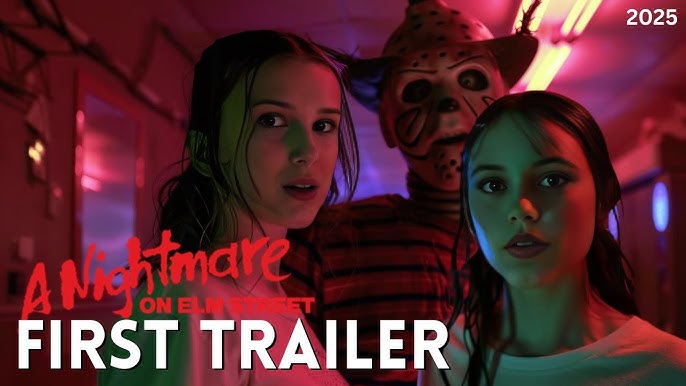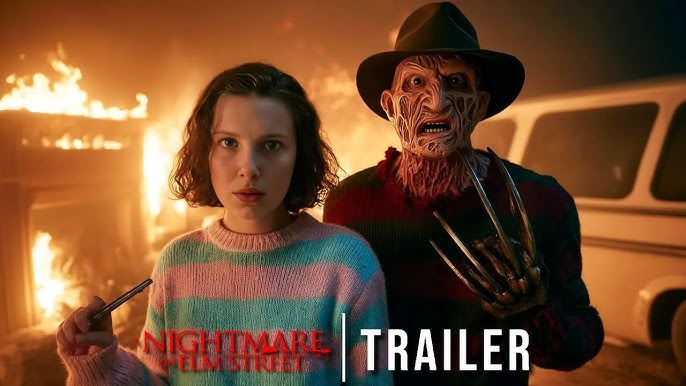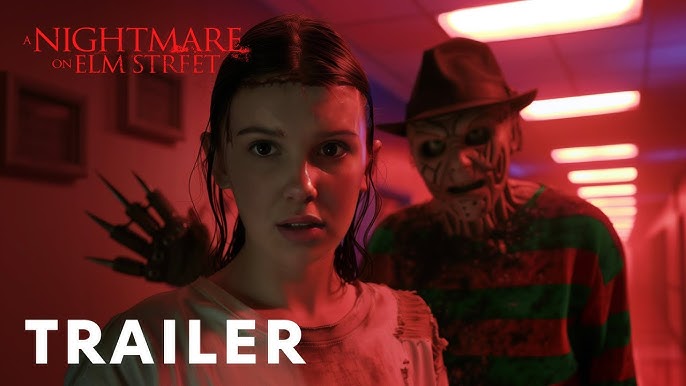A Nightmare on Elm Street 8: The Nightmare Unleashed (2026)

A Nightmare on Elm Street 8: The Nightmare Unleashed (2026)
Starring: Robert Englund as Freddy Krueger
Genre: Horror / Slasher / Supernatural
A Nightmare on Elm Street 8: The Nightmare Unleashed returns to Springwood with a terrifying intensity, plunging audiences into a world where the line between dreams and reality has been irrevocably shattered. Freddy Krueger, the sadistic dream killer whose reign of terror has haunted generations, rises again, and this time his reach extends far beyond the confines of the dreamscape. Robert Englund reprises his iconic role, delivering a performance that balances grotesque humor, malevolent cunning, and psychological terror, reaffirming Freddy as one of the most enduring villains in horror history.
The film opens in the familiar, seemingly peaceful town of Springwood, but the calm is only a thin veneer. The children of the town—now teenagers and young adults—have grown up with stories of Freddy Krueger, and many carry scars from past encounters. The film immediately establishes a heightened sense of dread, showing that Freddy’s influence has evolved. Unlike previous entries, where his power was limited to the dream world, in The Nightmare Unleashed, Freddy begins to torment his victims even when they are awake. Shadows move in impossible ways, whispers echo in empty hallways, and ordinary objects take on sinister forms, creating a pervasive atmosphere of paranoia and suspense.
Central to the story is a group of young adults who are unknowingly linked by Freddy’s legacy. Each has a connection to the children of Springwood who survived Freddy’s earlier attacks, and now the nightmare is passing to a new generation. The film carefully develops these characters, giving them distinct personalities, fears, and vulnerabilities. Some are skeptical, dismissing Freddy as a mere legend, while others are haunted by fragmented memories and inexplicable occurrences that hint at the continuing presence of the dream killer. This grounding in relatable human fears amplifies the horror, as audiences are invited to empathize with the characters’ terror while witnessing Freddy’s increasingly ingenious and sadistic methods.
The Nightmare Unleashed blurs the lines between the real world and the dream world in ways that are more unsettling than ever before. Freddy’s attacks are no longer confined to sleep; he invades waking reality, creating scenarios that force the characters—and viewers—to question what is real. Mirrors reflect impossible images, hallways stretch and twist, and rooms become mazes of shifting walls and shadows. These surreal sequences are executed with masterful cinematography and visual effects, amplifying the sense of disorientation and fear. Every frame is designed to unsettle, using lighting, sound, and camera angles to immerse the audience in the nightmare.
Freddy’s methods are more inventive and horrifying than in previous films. Each kill is crafted to exploit the deepest fears of his victims, blending psychological horror with visceral physical terror. From sudden, grotesque transformations to traps that defy the laws of physics, Freddy’s attacks are simultaneously shocking and darkly ironic, showcasing his trademark combination of cruelty and twisted humor. Robert Englund’s performance elevates these scenes, as he embodies a character who is at once theatrical and terrifying, delighting in the suffering he causes while remaining unpredictable and menacing.
The narrative is structured around escalating tension, with the characters initially struggling to understand the nature of the new threat. Early encounters with Freddy are subtle and disorienting—fleeting shadows, whispered taunts, and inexplicable accidents that hint at a supernatural presence. As the story progresses, the attacks become more direct and gruesome, culminating in sequences that fuse dream logic with waking reality. This progression keeps the audience on edge, as no character—and by extension, no viewer—can feel safe.
A critical aspect of the film is its exploration of fear itself. Freddy thrives not merely on killing but on the psychological torment of his victims. The Nightmare Unleashed delves deeply into what it means to be terrified, showing how dread can manifest in both overt and insidious ways. Characters are forced to confront not only external threats but also their inner insecurities, traumas, and guilt. Freddy’s power is amplified by these personal fears, making each confrontation intensely individualized and psychologically complex. This emphasis on fear as a weapon adds a layer of sophistication to the horror, elevating the film beyond conventional slasher tropes.
Visually, the film is designed to immerse viewers in a constantly shifting nightmare. Practical effects are combined with CGI to create a seamless blend of realism and surrealism. Scenes of blood, distorted bodies, and unnatural movement are both shocking and artistically crafted, ensuring that the horror is as visually striking as it is emotionally impactful. Lighting is used to manipulate perception, casting long shadows, obscuring threats, and heightening suspense. The cinematography emphasizes claustrophobia, using tight framing, sudden cuts, and off-kilter angles to keep the audience off balance.
The sound design is equally crucial to the film’s terror. Freddy’s voice—mocking, taunting, and omnipresent—is a constant reminder of the nightmare that looms over Springwood. Subtle audio cues—creaking floorboards, whispers in empty rooms, and distorted environmental sounds—create a sense of unease even in seemingly safe settings. During sequences where dreams and reality overlap, the score shifts unpredictably, oscillating between eerie silence and jarring crescendos, further immersing the audience in a world where fear is omnipresent.
Character relationships are central to the emotional core of the film. The group of young adults must learn to trust one another, confront their own past traumas, and work together to survive. Friendships are tested under extreme stress, alliances form and fracture, and personal sacrifices underscore the human cost of facing an unstoppable force. These dynamics deepen the narrative, giving viewers emotional stakes beyond the immediate threat of Freddy’s attacks.
The climax of The Nightmare Unleashed is a masterclass in horror storytelling. Freddy’s full power is unleashed, creating a chaotic, nightmarish environment where reality bends, and every character is pushed to their limit. The battle between human resilience and supernatural terror is both physical and psychological, culminating in sequences that are both horrifying and cathartic. The resolution is carefully crafted to satisfy both longtime fans of the franchise and newcomers, providing closure while leaving the door open for Freddy’s inevitable return.
The film also honors the legacy of the A Nightmare on Elm Street series. References to past events, recurring motifs, and subtle callbacks enrich the narrative for longtime viewers while remaining accessible to new audiences. Freddy’s character retains his signature wit and malevolence, ensuring that his presence is as iconic and terrifying as ever. Robert Englund’s performance ties the franchise together, reminding audiences why Freddy Krueger remains one of horror’s most enduring figures.
In conclusion, A Nightmare on Elm Street 8: The Nightmare Unleashed redefines horror for a new generation. By expanding Freddy’s reach into the waking world, blurring the boundaries between dreams and reality, and focusing on psychological terror as much as physical horror, the film delivers a suspenseful, terrifying, and unforgettable experience. With inventive kills, masterful visual and sound design, and Robert Englund’s unforgettable portrayal of the nightmare itself, the film ensures that fear is never far from the audience’s mind.
Freddy Krueger is no longer just a figure in dreams—he is a manifestation of fear itself, omnipresent, insidious, and inescapable. The children of Springwood—and the audience—are reminded that in this world, there is no safe place, no sanctuary from the nightmare, and no guarantee of waking up. The Nightmare Unleashed is a chilling, relentless, and masterfully crafted entry in the franchise, proving that Freddy’s terror is eternal, and that the nightmare never truly ends.
Rating: 9.3/10








